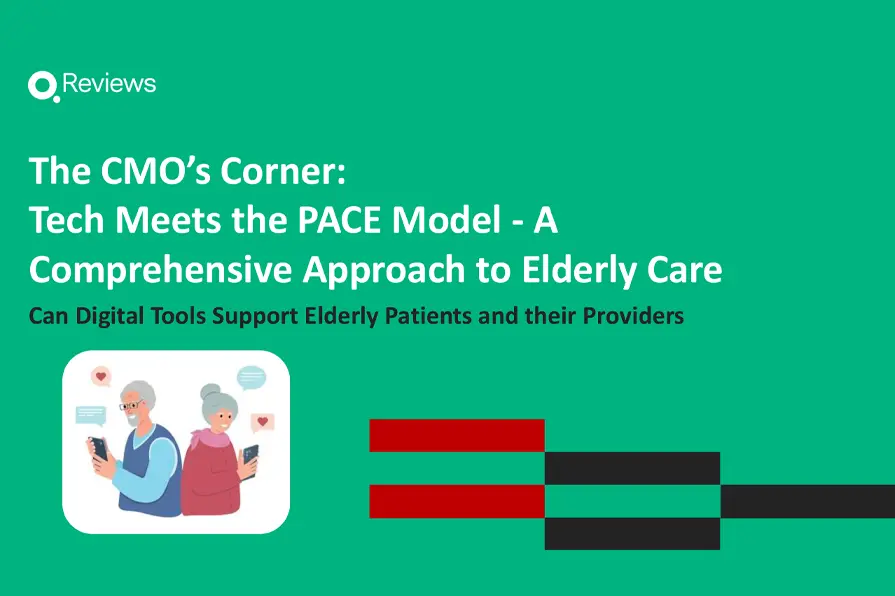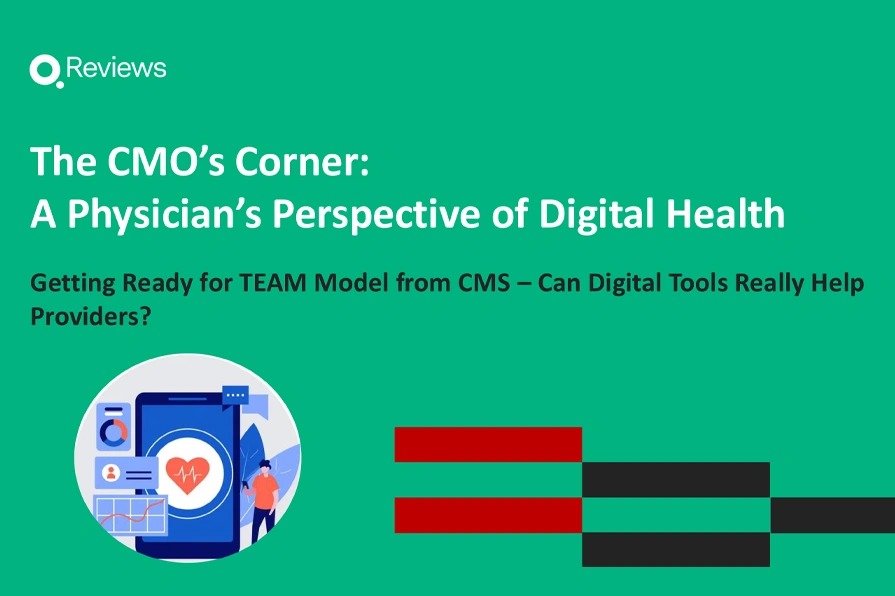
How Remote Patient Monitoring Can Improve Health Outcomes

No matter how great the care provided is, at-home care coordination is still an absolute must. After all, 20% of patients experience an adverse event within three weeks of leaving the hospital. What’s more, three-quarters of them can be prevented with appropriate care coordination. When considering stats like these, the potential for home care solutions and remote patient monitoring benefits becomes apparent.
Reducing these adverse events not only leads to better health outcomes, but also lower costs for patients/members, providers, and payers. But while many healthcare organizations understand the importance of at-home care coordination, few are leveraging remote patient monitoring and digital home care solutions to their full extent.
Challenges of Traditional At-Home Care Coordination
Most healthcare organizations rely on overworked clinical staff or just a few full-time care coordinators to check in on patients/members. But there are a few issues with this:
- Bandwidth: The volume of patients/members that need follow-up often exceeds the capacity of individual care coordinators.
- Timeliness: Bandwidth constraints lead many healthcare organizations to check in with patients/members only once, within a week of a discharge.
- Pull vs. Push: Patients/members must wait for care coordinators to contact them, rather than proactively asking questions or surfacing issues.
- Non-Dynamic: The care questions asked rarely vary over time, even as a patient’s or member’s condition evolves.
It’s true that some healthcare organizations use interactive voice systems (IVRs) as part of their care coordination outreach. However, their impersonal nature is off-putting to many patients and members, while their function and customization are limited.
Top Remote Patient Monitoring Benefits
Deviceless remote patient monitoring tools like Q @ Home can help overcome many of the challenges of traditional care coordination.
1. Scaling Existing Efforts
Care coordinators are often tasked with an overwhelming workload, especially when their primary job function is clinical. And with so many healthcare organizations already financially strapped, few have the resources needed to hire additional care coordination staff.
Digital home care solutions like Q @ Home don’t replace these staff, however. Instead, they amplify their efforts by reducing some of their manual workload, optimizing processes, and augmenting practices.
Example Use Case: Managing Diabetic Patients
Over the years, the aging population and obesity epidemic have resulted in more and more diabetics. At West Maple Hospital, the care coordination team is having trouble regularly checking in on their diabetic patients.
Currently, the team makes calls every other day. Given the volume of patients in need of assistance, however, they’ve had to scale back the number of questions they ask. For example, they no longer ask whether a patient has any questions for their provider.
With Q @ Home, however, they can automatically send links to health surveys via SMS text message. This allows them to get details on patients’ A1C and blood glucose levels, weight, diet, and exercise. There are even fields that allow patients to surface questions to their providers. As a result, care coordinators spend less time on manual outreach and more time helping at-risk patients.
2. Enhance Preventive Care
Among the most important remote patient monitoring benefits is preventing healthcare issues from escalating. At present, unfortunately, many patients/members don’t address health issues until they reach a crisis point. In fact, chronic care and disease management make up 90% of US healthcare spending.
As the saying goes, though, an ounce of prevention is worth a pound of cure. The earlier a patient or member can address a health issue, however, the better their odds of a favorable outcome. On top of that, it’s less expensive for them — and for providers and payers.
As such, preventive medicine has been a major area of focus for both payers and providers in recent years. Value-based care plans, for example, have exploded in popularity. But with care coordinators spending so much time assisting acutely ill patients/members, preventive medicine can sometimes fall by the wayside.
Remote patient monitoring platforms like Q @ Home, however, allow care coordinators to check in with patients/members before their health issues reach a crisis point. And by providing them with essential information, they may even be able to prevent these health issues from escalating at all.
Example Use Case: Reducing Members’ Risk of Heart Disease
Centered Health Plan has a goal of lowering members’ heart disease rates by engaging with their most at-risk members. Using Q @ Home, they can send surveys and links to educational resources to at-risk members via SMS text message. This includes:
- Reminders to schedule cardiology exams
- Low-sodium & low-cholesterol recipes
- Recommended forms of exercise
- Videos explaining heart disease warning signs & when to seek help
3. Learning & Catering to Patient Preferences
Even after reminding patients/members to stay on top of their health, they may ignore it or delay care. That doesn’t mean it’s a lost cause altogether, though. Many times, it’s just a matter of finding the right motivation.
Sharing content with patients via digital home care solutions allows you to both get content in front of patients/members and see what they engage with. Send them a variety of content, and you can see what kind they most gravitate toward. After this, you can even create a custom nurture path that shares similar content with them. Ultimately, this can help motivate them to do the right thing.
Example Use Case: Encouraging Patient to Schedule Colonoscopy
Enrique is a 55-year-old man with an elevated risk of developing colon cancer. However, his PCP has been reminding him to schedule a colonoscopy for the past several years to no avail.
The care coordination team at his PCP’s office leverages Q at Home to send links to resources that emphasize the importance of scheduling a colonoscopy via SMS text message. These resources include explainer videos from doctors, infographics, patient testimonials, and FAQs.
Enrique continually engages with videos of patients saying they got colonoscopies to be there for their grandchildren. Since Enrique’s daughter just gave birth to his first grandson, this topic resonates with him deeply.
After noticing this pattern, the care coordination team creates a custom nurture path of similar resources aimed at grandparents. When they include a link to schedule a colonoscopy, Enrique finally schedules one for the next month.
4. Unify a Fragmented Care Journey
Another one of the key remote patient monitoring benefits is giving patients access to the right information at the right time. In the information age, people have access to a nearly unlimited amount of online medical content. The problem is, the information they access isn’t always useful.
Some content comes from unreliable sources and may offer ineffective, or even dangerous, solutions. Other content, while more reliable, may not apply to patients’ circumstances. When patients come to their providers citing this information, they may be hesitant to move forward on a treatment plan that doesn’t align with it.
Odds are, patients are going to consume content like this no matter what — and through a remote patient monitoring platform, healthcare providers can make sure that they’re the ones serving it to them. That way, they can ensure that patients receive their content from a trusted source, better understand their condition, and align on the treatment plan that’s truly best for them.
Example Use Case: Empowering an Expectant Mother
Cheryl is a pregnant 33-year-old woman. She’s about to become a first-time mom, and is eager to learn everything that she can to create the best outcome for herself and her baby. One of her friends recommended a Facebook group for expectant mothers — unfortunately, much of the crowdsourced advice being shared isn’t grounded in established medical best practices.
Her OB/GYN becomes concerned when Cheryl asks about dropping the folic acid supplements she’s been taking after hearing that it was healthier to get folate from unadulterated whole foods like spinach and eggs — but her doctor knows that it will be difficult to get an adequate amount from food alone.
After talking to Cheryl, the OB/GYN instructs the care coordination team to build out a customized patient flow for Cheryl detailing what she can do to keep herself and her baby healthy: articles and videos on nutrition, parenting a newborn, and even information on maintaining mental health during pregnancy given her history of anxiety.
At the next appointment, Cheryl has read and followed all of the instructions and feels more prepared than ever to welcome her daughter.
5. Assist With Transitions of Care
For some patients — particularly ones that are elderly or facing complex health issues — discharge doesn’t always involve going straight from the hospital to home. They may go to an intermediary such as a skilled nursing facility (SNF) first, and then to their home.
The more transitions there are in a patient’s care journey, however, the more opportunities there are for information to get lost in translation. If you’ve ever played the game Telephone, you know how easy it is for messages to change from the first person to the second, let alone the third and beyond.
Besides simple misunderstandings of care instructions, the care instructions can actually change — what a patient needed to do after a hospital visit may no longer be necessary at an SNF as their condition evolves.
Digital home care solutions like Q @ Home, however, can provide some much-needed clarity and consistency to this process by:
- Reducing the risk of errors and enhancing continuity of care by ensuring that all relevant data — medical history, diagnoses, medications, and treatment plans — are accurately transmitted from facility to facility
- Empowering patients with the knowledge they need to actively participate in their care transitions and make informed decisions by sharing educational content about their conditions, treatments, and self-management strategies
- Facilitating communication and collaboration among healthcare providers involved in the care transition process
- Improving adherence to care plan and reducing the risk of complications/readmissions by sending patients automated reminders regarding medication schedules, appointments, and self-care tasks
- Providing patients with an outlet to ask questions, voice concerns, and provide feedback about their care transition experience
Example Use Case: Coordinating Care for a Hip Replacement Patient
Debra is a 65-year-old woman who underwent hip replacement surgery at the hospital and is discharged after three days. Using Q @ Home, the hospital sends post-discharge instructions to Debra via SMS text message. At that point, she is transferred to an SNF where she receives additional coaching on how to readjust to daily living activities. After several days at the SNF, she leaves to stay with her sister, with the SNF sending her a regimen of personal exercises via Q @ Home and automated reminders to complete them. Unfortunately, Debra develops a fever due to a wound infection — but using Q @ Home, she can send pictures of the wound to the doctor, who recommends that she schedule an appointment. After an appointment where Debra receives antibiotics and subsequently, instructions on wound care through Q @ Home, she is back on the road to recovery.
Revolutionize Your At-Home Care Coordination With Remote Patient Monitoring
At-home care coordination plays a critical role in a patient’s continued well-being. And with remote patient monitoring benefits including a lower risk of post-discharge adverse events, reduced hospital readmissions, and lower costs for patients, providers, and payers, it’s truly a win-win-win solution.
As the Baby Boomer population continues to age, increasing the gap between care coordinator capacity and patient volume even more, providing care coordinators with the technology that they need to do their jobs smarter will become even more important — making investing in digital home care solutions today a move that will pay off for years to come.








